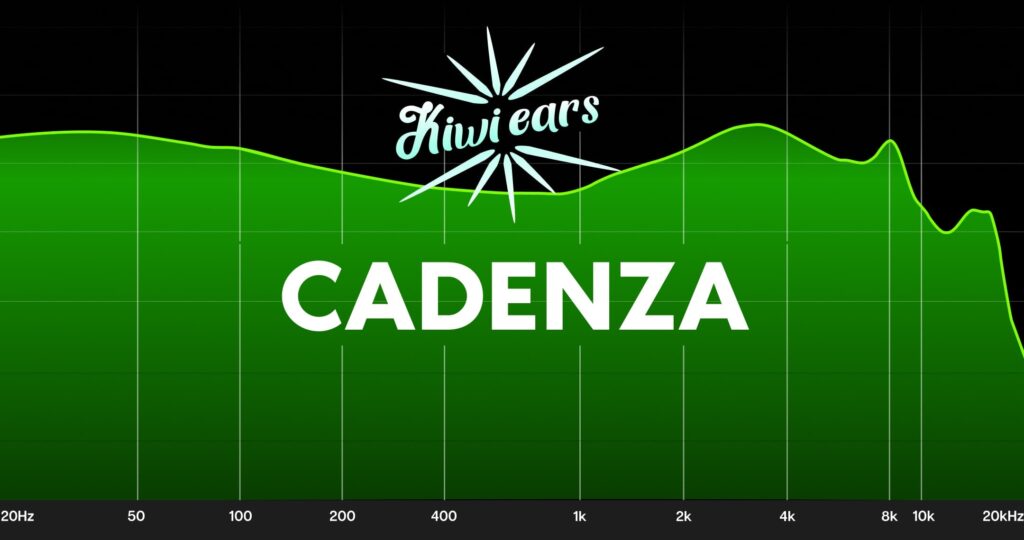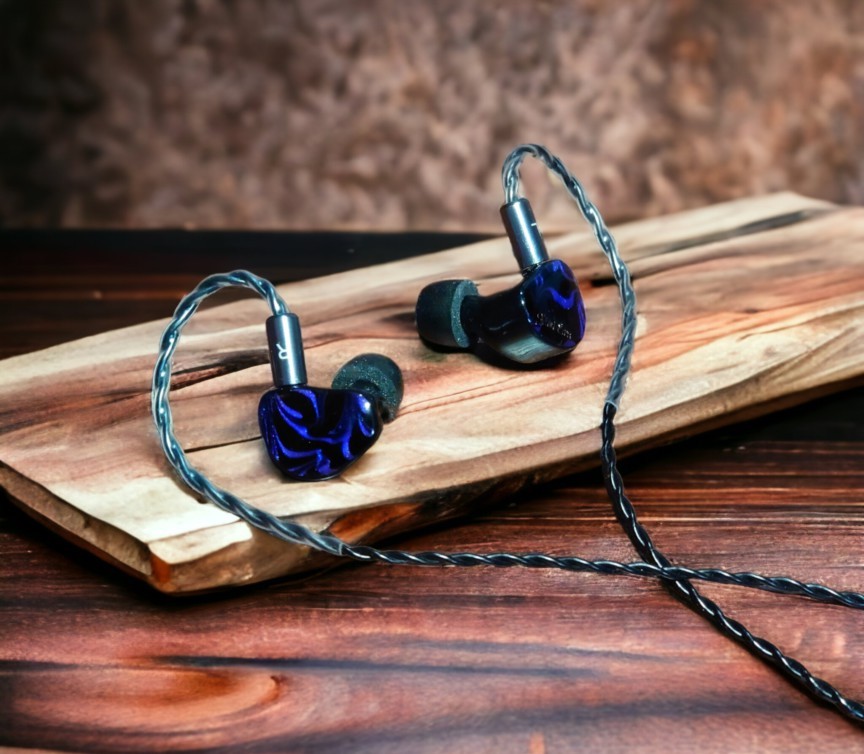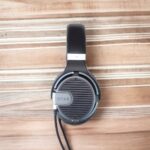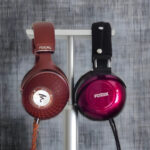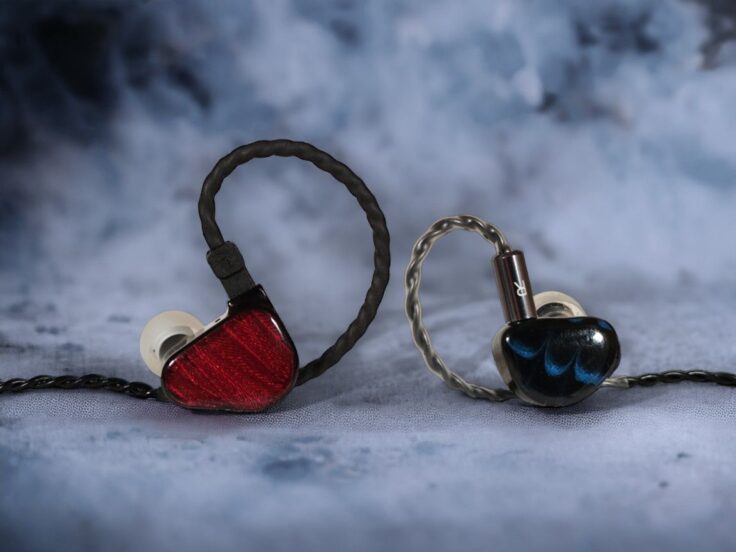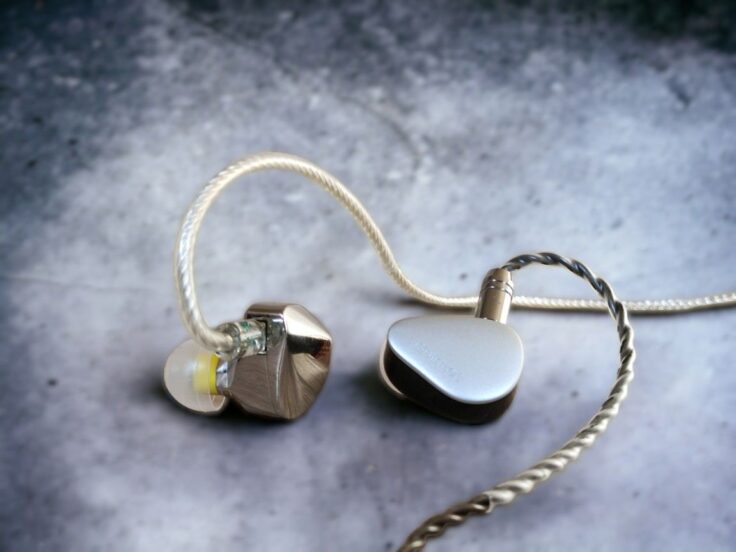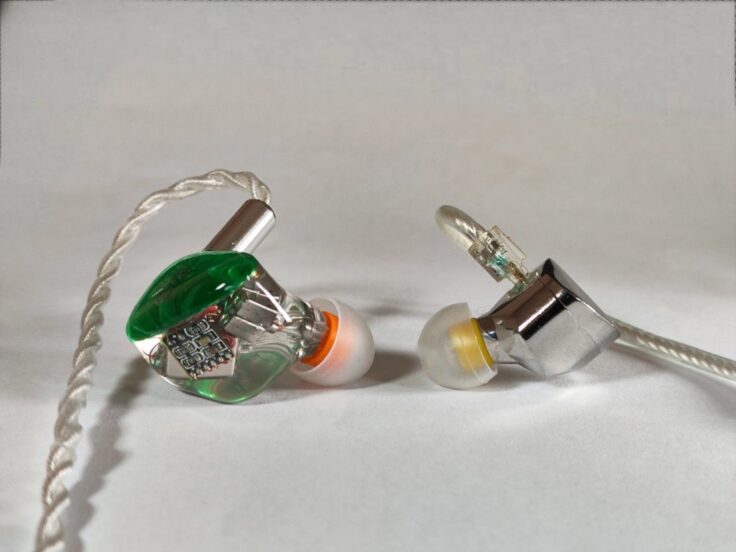Since the first review in 2013, The Headphoneer has mostly been focused on rather expensive audio gear. However, I have been thinking about doing more budget-friendly reviews, and also iEM reviews, for a long time. When the Chinese audio company and online store Linsoul reached out to me and asked me to review some of the Kiwi Ears IEMs, I thought it was time to give real budget audio a chance. I took a look around and the Kiwis looked solid enough. So I said yes to Linsoul, and it felt right to start with the Cadenza, their $35 entry-level IEMs.
This page is supported by users when they donate or use affiliate links to shop for anything on Amazon via our link here .
Kiwi Ears is a relatively new Chinese brand owned by Linsoul Audio. The Cadenza is priced very aggressively at $35. It was sent to us free of charge.
The Cadenza is the lowest priced of the Kiwi Ears. Here’s the current lineup as of September 2023:
- Kiwi Ears Cadenza $34.99
- Kiwi Ears Quartet $109.00
- Kiwi Ears Quintet $219.00
- Kiwi Ears Orchestra Lite $249.00
- Kiwi Ears Orchestra $499.00
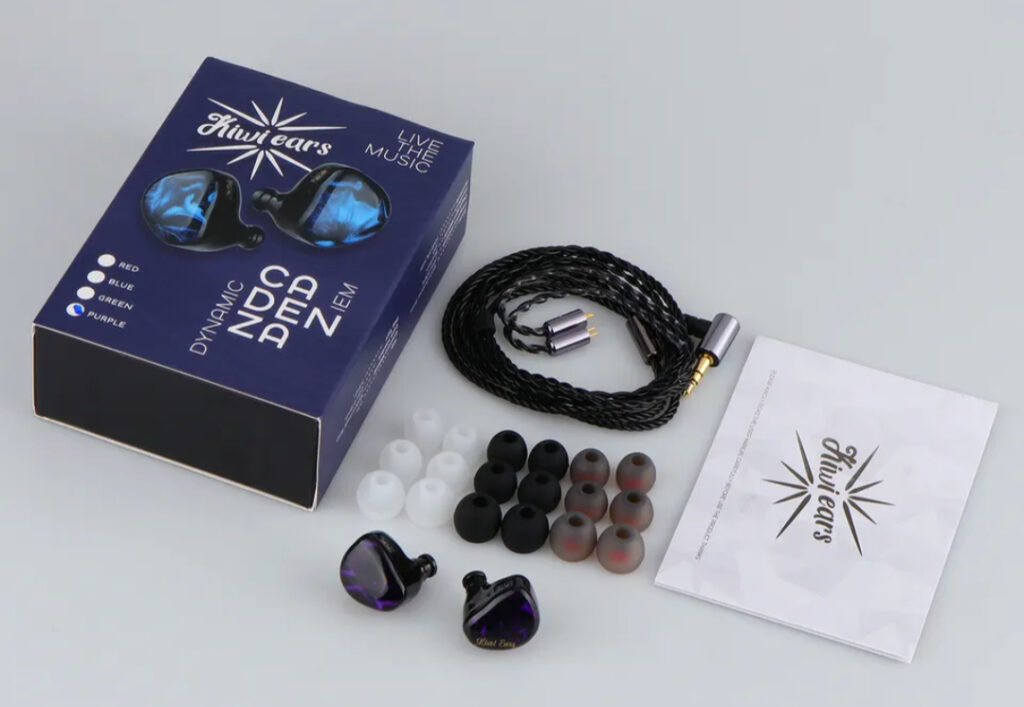
SPECIFICATIONS
- Drivers:10mm Beryllium Dynamic Driver
- Sensitivity: 110dBSPL/mW
- Frequency Range: 20Hz-20KHz
- Impedance: 32Ω
- Material: Medical-grade resin
- Cable: 0.78 mm 2 PIN on headphones to standard 3.5mm jack (TRS)
BUILD QUALITY
In the package you get the IEMs, a cable and 3 types of tips, all in three sizes.
The iEMs themselves look and feel solid and high quality. The “medical grade” resin material they are made of feels good to the touch and is lightweight and good-looking. They fit nicely into my ear.
The cable is good. Lightweight and comfortable. It fits nicely around my ear. There is a shapeable tube covering the cable the closest 10 cm to the IEMs. This is usual with IEM cables and allows you to shape the cable to fit around your ears and stay in place. The cable material has some friction, which is good.
It uses a 0.78 mm 2 PIN attachment to the IEMs, and a 3.5mm angle TRS jack at the amplifier end. For users with a phone with a case with a small headphone connector opening, it can be noted that the 3.5 mm jack is a bit wide and flat, it does not have that little extension section needed for some phone cases.
There are three different types of tips included, or rather different colours, all in three sizes. They are all made of a similar silicone-type material. They don’t seem to match the quality of the IEMs and the cable. They are very difficult to mount on the IEMs because of the extremely tight fit, they don’t seem to be completely consistent in size either. This is the place where Kiwi Ears seems to have cut some corners. But at this price point, you probably have money left to buy your own 3rd party tips if needed. That being said, I did actually manage to get a nice fit with one of the supplied tips after some struggling.
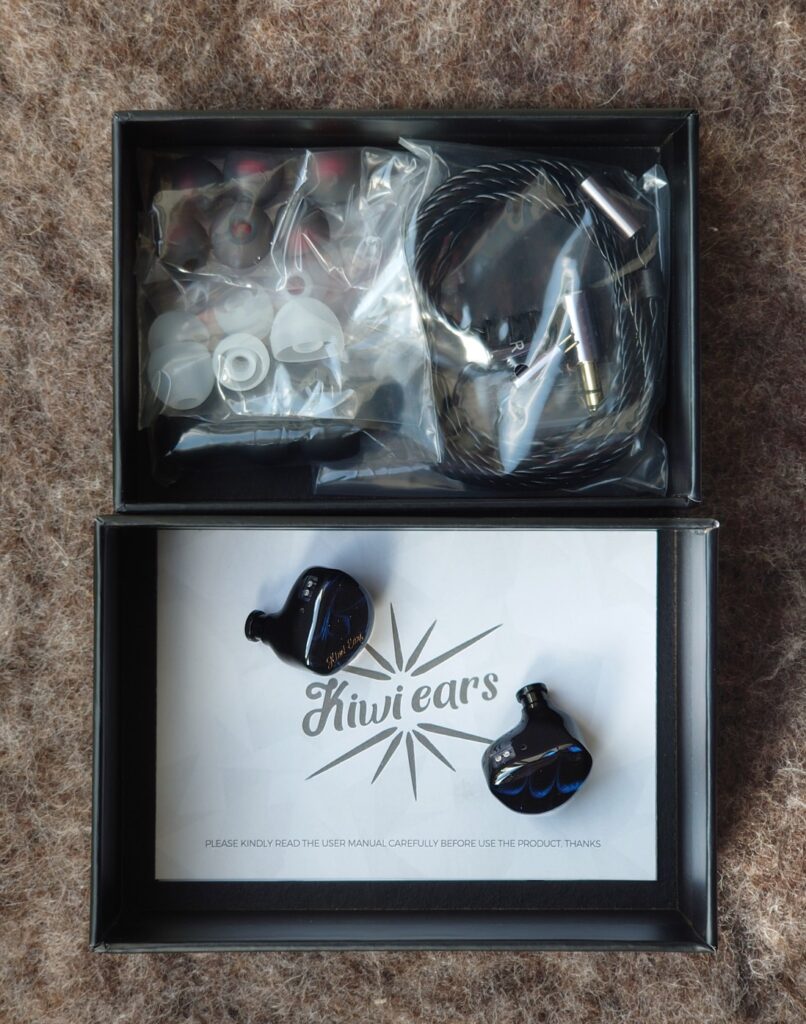
NOTES ON EAR TIPS
If you are new to IEMs, you need to know that the tips, the silicone or foam stuff that surrounds the nozzle (the tip that you put into your ear) is as important as the IEM itself. It is not necessarily so that the included tips will suit your air canals and secure a proper seal and fit in a comfortable way.
I tried both 3rd party foam tips and silicone tips and found that foam tips had a slightly less bright sound, with a bit muffled highs, a smaller soundstage and a slightly stronger bass.
Good tips are often not inexpensive, and as a beginner you might end up trying and failing a bit. Thus it is good to start with an inexpensive pair of IEMs to have some money left for tips in case you don’t find the included ones to fit your ears.
It could be a smart thing to purchase starter pack with all sizes. Depending on the IEMs you can need quite different sizes. Here’s a nice starter pack:
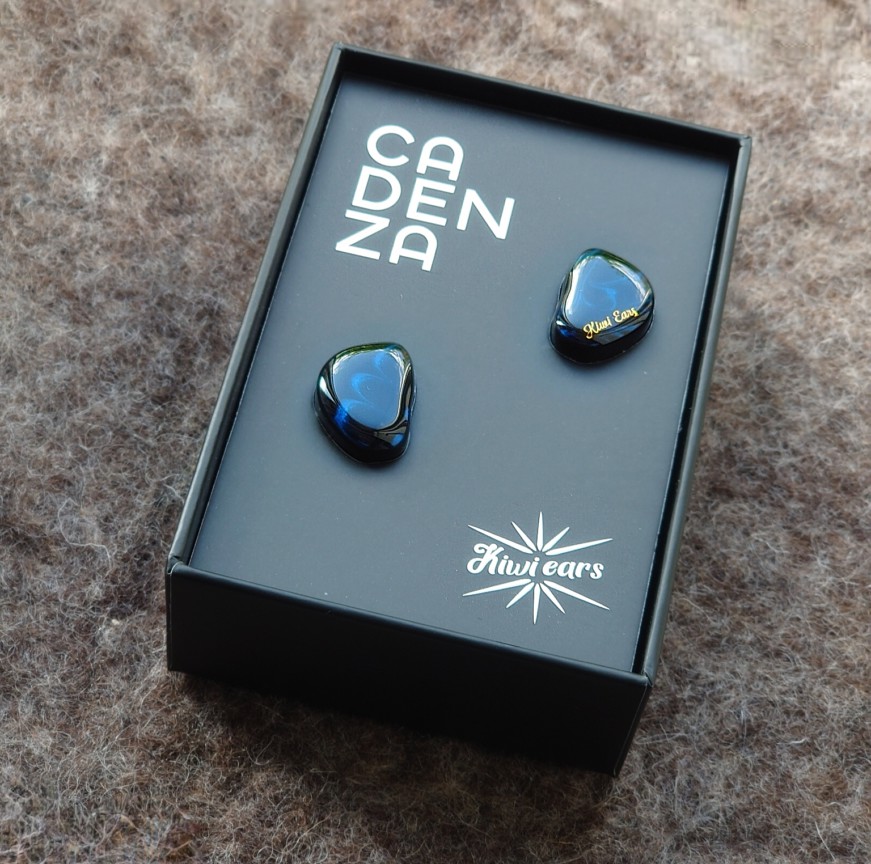
INSERTING IEMs
It can be a bit of a challenge to find a good way for you to insert in-ear monitor into your ear. It depends on the IEMs and the size and type of tips. Best advice I ever got was to grab your ear and pull it gently backwards (in order to open up the ear canal) while gently inserting the IEMs into your ears. Watch some videos online on inserting IEMs. If you cannot get a good seal you might have too small or too big tips. Some even need different sizes for each ear.
DRIVER AND TUNING
The Cadenzas are tuned to meet Kiwi’s variant on the “Harman curve” to give the most “natural sounding” frequency response to the listener. The tuning is done with the design of the driver itself and design of the acoustic chamber inside the IEM housing.
The Cadenzas uses a single 10mm Beryllium driver. “Beryllium driver” sounds very exciting – and it is. The Focal Utopia full-size headphones use Beryllium drivers, and it’s the best dynamic headphones in the world. Beryllium is very lightweight and stiff, both are essential attributes of a good diaphragm in a driver, be it in an IEM, headphone or speaker driver. A stiff and light diaphragm will result in more accurate sound reproduction and less distortion due to a fast and accurate response to the audio signal.
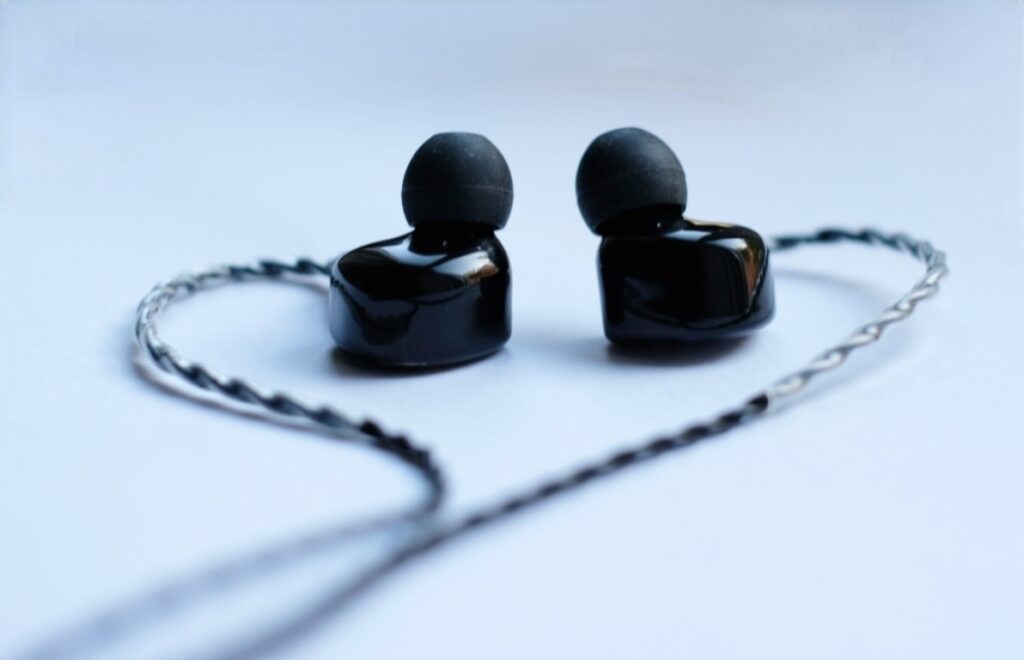
LISTENING IMPRESSIONS
After some trying and failing, I ended up using one of the supplied black silicone tips.
I also tried my own soft silicone ClearTips and some Sennheiser and Comply foam tips. I struggled to get a comfortable seal, and when I did the sound was a bit different with each tip. I chose the one that sounded the best and was the most comfortable and it happened to be one of the Kiwi Ears supplied ones.
I wanted to make sure I gave the Cadenzas the best possible conditions and didn’t skimp on the amplification and the source. The amplifier used is the neutral-sounding and powerful Monolith THX AAA 887 desktop amplifier, the source is the RME ADI-2 DAC FS desktop DAC.
The following are my subjective impressions in comparison to nothing specific, just trying to enjoy the music and describe what I hear.
All For Us by Labyrinth
The bass is tight and quite powerful, with good amounts of texture. The vocals stand out nicely. The soundstage is pretty open-sounding.
Almost Like the Blues by Leonard Cohen
The bass is powerful and deep but not more present than it should be. Cohen’s voice is rendered with a nice amount of texture. Again, I find the sound stage to be pretty nice and wide.
As Before by Olga Konkova
The Cajôn hits as hard as it’s supposed to. Punch and detail are quite good. The piano is clear, delicate and nicely rendered. The vocals are delicious and quite upfront.
Compare Manuel by Vicente Amigo
The bass is kept in the background but is easy to follow if you listen for it, allowing the guitar to take the center stage – as it is supposed to. There’s a nice warmth to the presentation. Percussion and background details are rendered nicely. Great dynamics.
Vivaldi 4 Seasons – Winter – by the Norwegian chamber orchestra
The general presentation is quite nice. The soundstage is quite open. I like the tonal balance.
Bored by Deftones
Because the treble is so non-fatiguing I can crank up the volume quite a bit. The bass amount is just right. I find the instrument separation and detail very good. I cannot believe we are talking about sub $40 IEMs.
Can’t You See by Susan Wong
The guitar is warm and nicely crisp, and the vocals are velvety and seducing. Instruments are relatively easy to separate from each other. A nice presentation.
Cadenza by Marcin Wasilewski Trio
Here’s a song that is called the same as the headphones. This jazz trio track sounds very well balanced on the Kiwi Cadenzas. Pretty spacious too.
Daddy Lessons by Beyonce
The bass is quite nice but the vocals are taking center stage. The treble is crisp without being fatiguing.
In conclusion, I find the overall tonal balance very enjoyable and unintrusive. These are headphones that you can listen to for a long time without fatigue. It does not have extremely powerful bass, the treble is nice and crisp without being too bright. I’d call these IEMs quite neutral sounding. Compared to many competitors, they are definitely not bass-heavy.
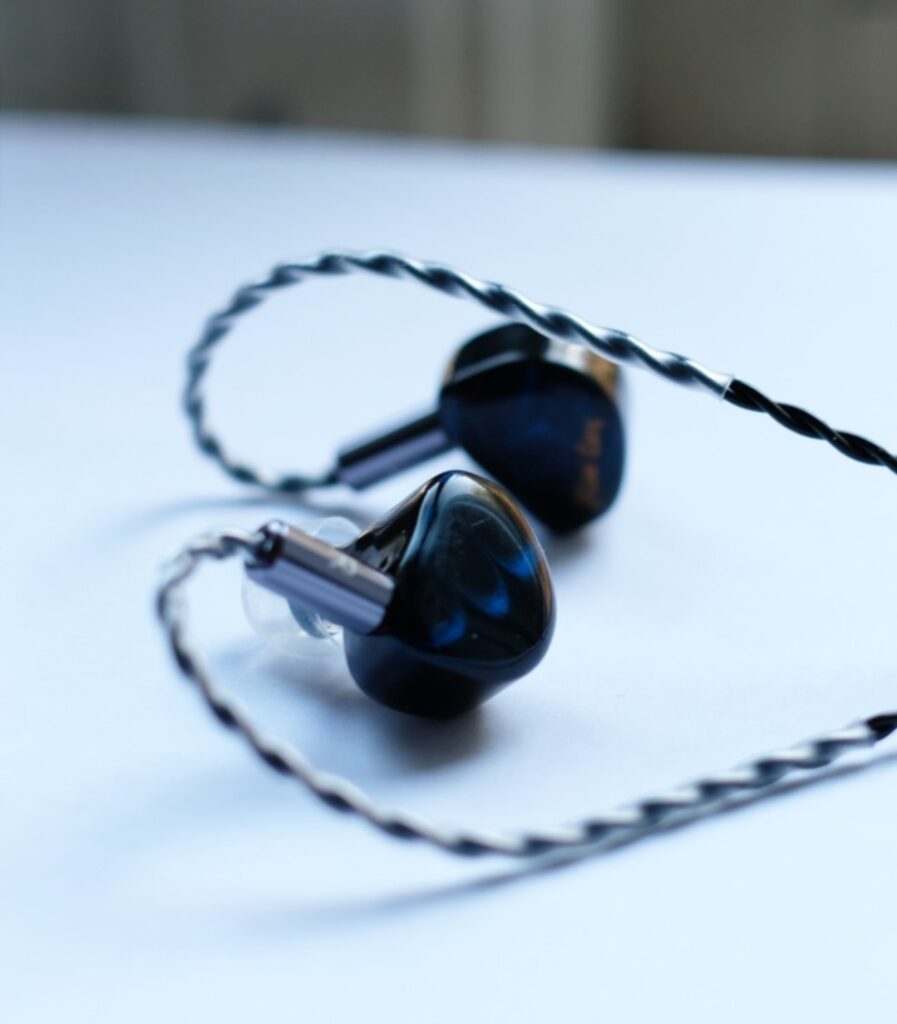
COMPARISONS
All comparisons were done with the Monolith THX AAA 887 amp with the RME ADI-2 DAC FS as a source. The RME is great by itself for iEMs and it was mainly for practical reasons I used the Monolith.
SHURE SE215 VS KIWI CADENZA
These $99 IEMs are professional go-to IEMs made for use on stage at loud levels. They have however gained popularity as IEMs for music listeners as well. They are a quite old design, but on stage they have proven to do what they are supposed to. They are light and reliable.
Sound wise, they have quite more bass quantity than the Cadenzas but are definitely not the last word in bass quality. The detail level otherwise is more often than not lower than that of the Cadenza. The tuning is quite different, with less treble energy, more bass, smaller soundstage and generally a darker presentation. I find the same result both if I use foam or silicone tips on the SE215.
The supplied tips are of better quality on the SE215. However, the Shure IEMs have an unusually thin nozzle. You cannot use normal tips on the Shures. A plus for the SE215 is the smaller size and lighter weight.
Even if it’s more than double the price, I wouldn’t personally pick the SE215 instead of the Cadenza for music listening. I prefer the Cadenzas overall presentation and find it delivers significantly more detail as well.
SHURE SE425 VS KIWI CADENZA
Like the SE215, these are old – but still going strong – designs aimed at the professional market. At $270 this is a radically more expensive pair than the Cadenzas. Keeping it short and simple, the SE425 is more detailed in the mid-range and treble – in a very smooth way. The bass is however not better. It is less pronounced and less textured than with the Cadenza. Basically, the SE425 is stunning with vocals and has cleaner and more liquid highs. The soundstage is similar to the Cadenzas’.
SENNHEISER IE200 VS KIWI CADENZA
Four times the price at $149, the IE200 comes with better tips and a carry pouch. The IE200 is lighter and smaller, and thus more comfortable. They should also bring better sound quality to the table but do they – and how much?
First, the tuning is similar, the Harman Curve has taken over both in China and Germany, it seems. The IE200 sounds more refined, especially the treble is smoother, there’s more micro detail, or plankton, as some call it. The mid-range is both a bit more upfront and also a bit rawer sounding with the Cadenzas. The IE200 is more refined and a little more polite. The bass is very good with both, the Cadenzas hold up very well in direct comparison. I would say they’re in the same ballpark.
TRUTHEAR X CRINNACLE RED VS KIWI CADENZA
These are super-hyped IEMs costing $55, $20 more than the Cadenzas. You get a nicer box, a carry pouch and a similar cable, except that the angled 3.5 mm jack has that little “phone case” extension. It also comes with a set of seemingly slightly better quality tips, but then, with the Cadenza you have 20 bucks extra to buy your own tips with.
The RED uses a more complicated dual dynamic driver setup instead of a single driver like the Cadenza. Sound-wise, though, they are not far apart. The RED also has a “Harman curve”-tuning (they are developed in cooperation with the reputable audio-measuring-fanatic Crinnacle). It has a natural-sounding bass, great midrange, clear highs, a good soundstage and a non-fatiguing sound profile.
Both the REDs and the Cadenzas sound amazing for the money. They are in the same league, both have “giant killer” potential. I don’t find the REDs to be objectively better than the Cadenzas in any way.
Some noteworthy differences: The Cadenzas require a bit more power from the amp. The REDs are a bit bigger, so fit might be an issue for some. For me, the Cadenzas fit better in the ear.
YUIN PK1 EARBUDS VS KIWI CADENZA
These $150 earbuds are extremely good, for earbuds. They cannot touch the bass of IEMs, it is simply a matter of physics. IEMs seal your ear canals, earbuds don’t. However not everyone is comfortable with IEMs for the same reason, and for them, the PK1 is a great alternative. However, I do not find them more detailed or better than the Cadenzas in any objective way. The PK1s does nonetheless have a very nice and relaxed sound signature with impressive detail. If you prefer earbuds, Yuin PK1 is maybe as good as it gets.
KIWI EARS QUARTET VS KIWI CADENZA
The Quartet has a bigger housing for their 4 drivers. It is the next step in the Kiwi Ears lineup. However, it is a step to the side as much as it’s a step up. The Quartet’s has much more bass. Its larger physical size also sets it apart from the Cadenza. The Quartet needs less juice from the amp to reach the same listening level. The Quartet has two switches that adjust the sound. I used only the stock configuration in this comparison. I’ll do a separate review of these soon where I will go more in depth.
In stock configuration, the Quarter has a lot more bass quantity, maybe because they actually have two small subwoofers inside of them. If the tracks you listen to have bass, you’ll definitely hear it. The Quartet is a pair of IEMs for those who want that extra bass push. The lower mid-range is thicker and fuller, too. Treble on the Quartet is quite nice, it feels a little bit more refined than the Cadenza. However, I might recommend the Cadenza rather than the Quartet as your first IEMs. The extra bass is not for everybody and I really like the Cadenzas’ tuning.
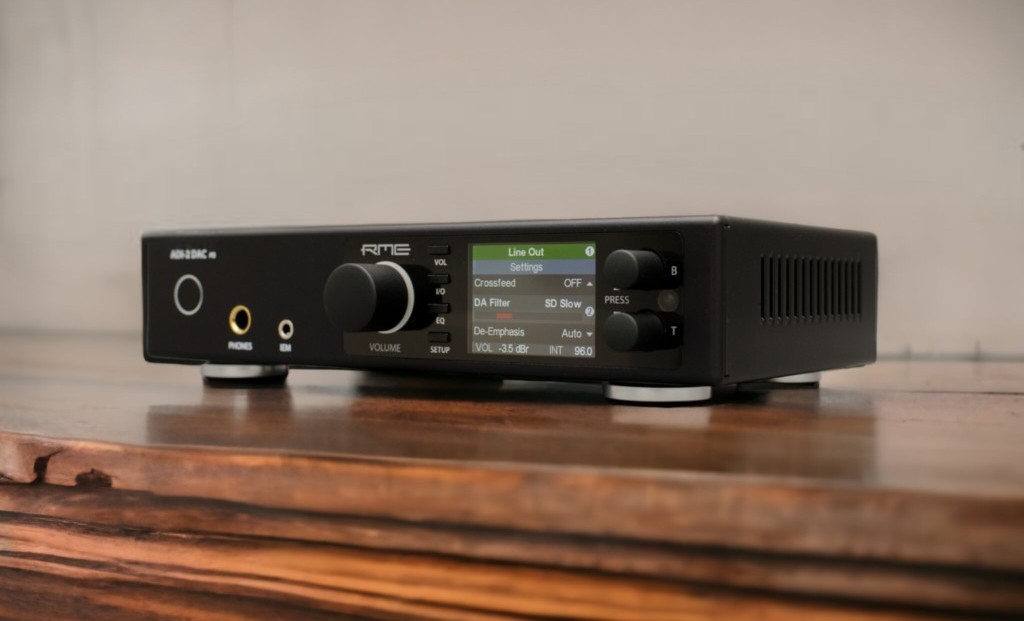
AMPLIFICATION
So far I have listened to the Cadenza with a rather expensive desktop rig. The RME ADI-2 DAC FS is a great DAC and all-in-one for IEMs. The Monolith THX AAA 887 is a superb amp. However, very few will use the Cadenzas that way, so here’s a brief test with different portable devices.
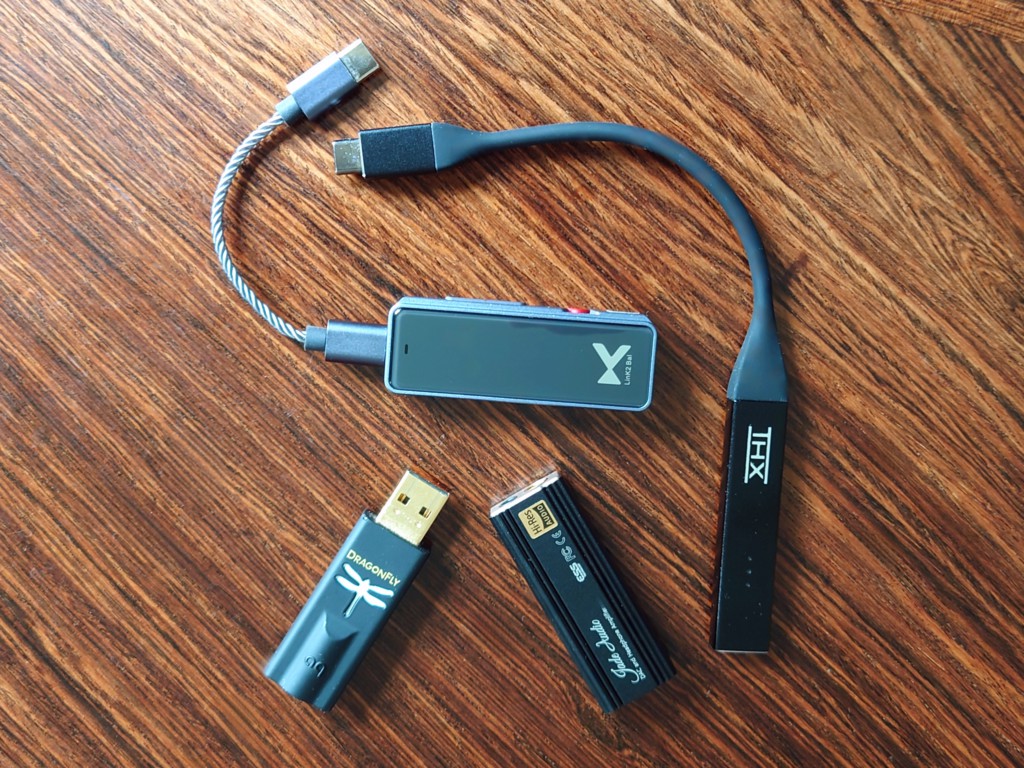
THX ONYX DONGLE – A rather expensive little thing at $249, but it sure makes the Cadenza sing when I attach it to my Android phone. It sounds very punchy, and delicate and with a nice hint of warmth. Not really a very big step down from the big rig.
DRAGONFLY BLACK -Sounds very good, basically on par with the THX Onyx.
XDUO LINK2 BAL – Unbalanced. Also good, basically close to the THX Onyx.
FIIO K3 – Unbalanced. Had to set it to full volume. Sounds good, but maxed out. Probably better with the balanced output which is more powerful, but then you need a balanced cable.
LGV40 PHONE – It sounds good, although a bit muffled in comparison to the Onyx THX and the others. I did not have any problems with the cable connector jack and my phone case.
SONY XPERIA 5 III – Also quite acceptable but less than the LGV40 and a big step down from the Onyx THX. With my Sony, I had to take off the phone case to connect the 3.5 mm jack.
Concluding, the Kiwi Ears Cadenzas deserve a nice amp. The LG V40 phone, which is among the best phones ever for headphones, did OK, but not in the same league as the dongles.
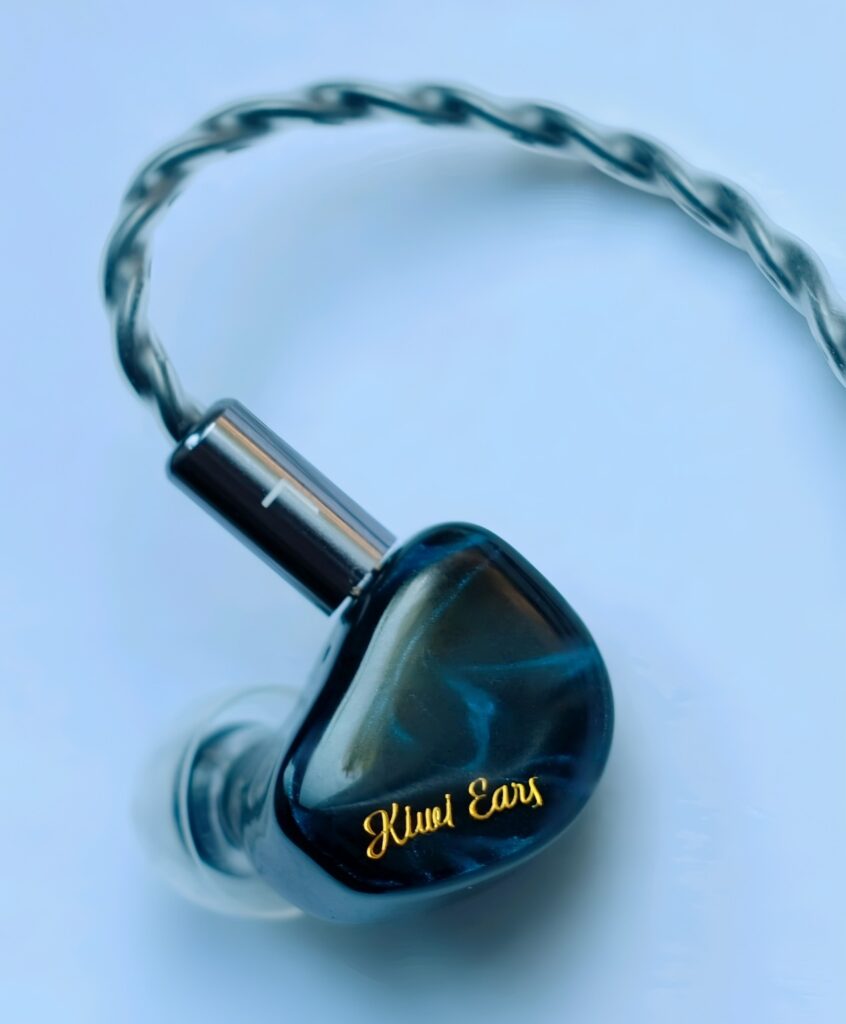
CONCLUSION
Honestly, I do not know what more to expect from $35 in-ear monitors. The bass is well-tuned, deep and tight and doesn’t bleed up into the mids. The mid-range is open and detailed. The treble is crisp and clear without inducing fatigue. The soundstage is pretty open and wide. Instruments are positioned nicely in space.
As always you need to get a proper fit and seal with ear tips that work for you. The Cadenzas need a nice amp to shine. Once you have that in place, I don’t know why you shouldn’t be happy with these IEMs. The Kiwi Ears Cadenza comes highly recommended.
Buy on Linsoul: Kiwi Cadenza
Buy on Amazon Kiwi Cadenza
We make earnings through affiliate links and any purchase you make on Amazon or Linsoul clicking one of our links will give us a small provision at no cost to you.
We only get a provision for items that are not returned, so there’s no incentive for us to recommend something that’s not good.
Linsoul : Headphones, Earbuds, Wireless Earbuds, Desktop DAC/AMP, Portable DAC/AMP, Digital Audio Players,
Amazon: Headphones, IEMs, Headphone Amplifiers, Home Audio or Anything else.
.
If you enjoyed this article or other content on The Headphoneer, you might consider leaving a small donation to keep this website up and running. No donation is too small. Thanks for supporting us!
If you like our work please follow us on Instagram, Facebook and Twitter , it will help us grow. Sharing is caring 🙂
…
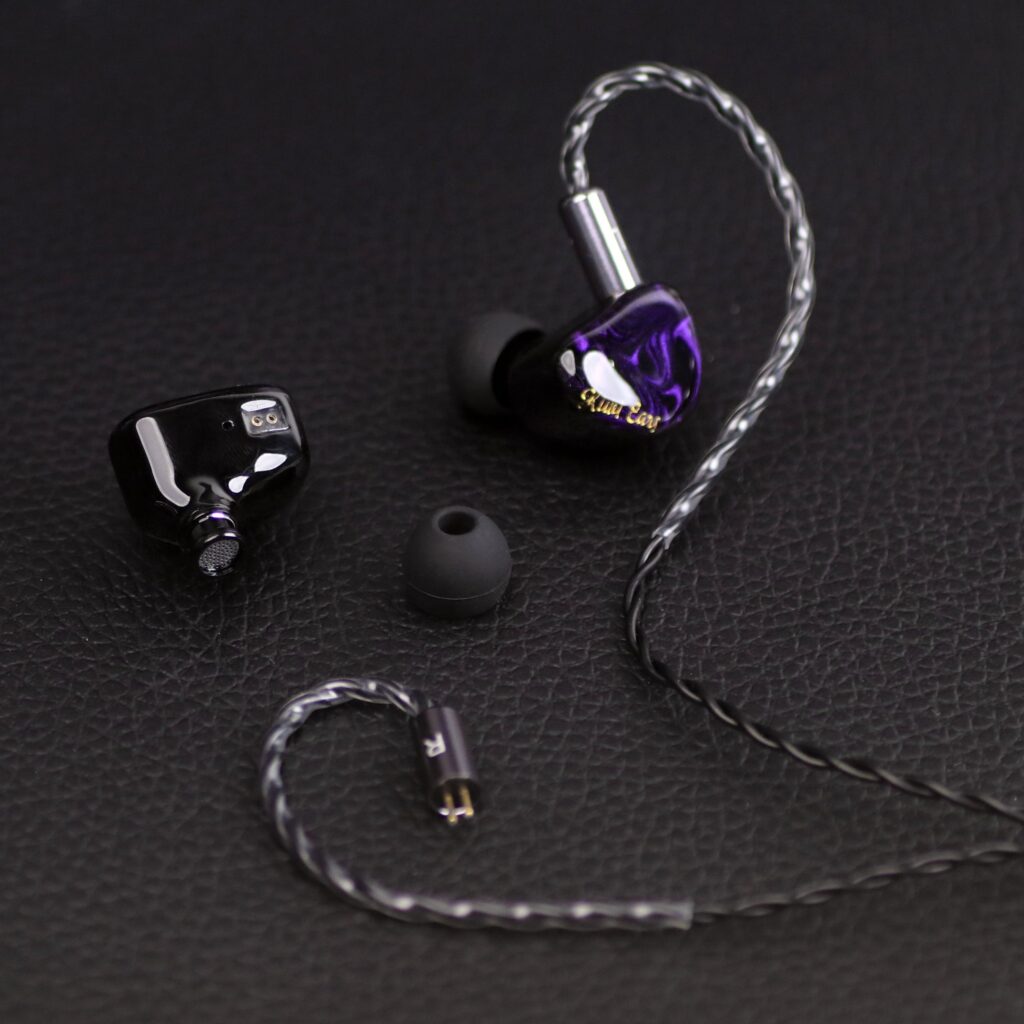
Picture from Linsoul
